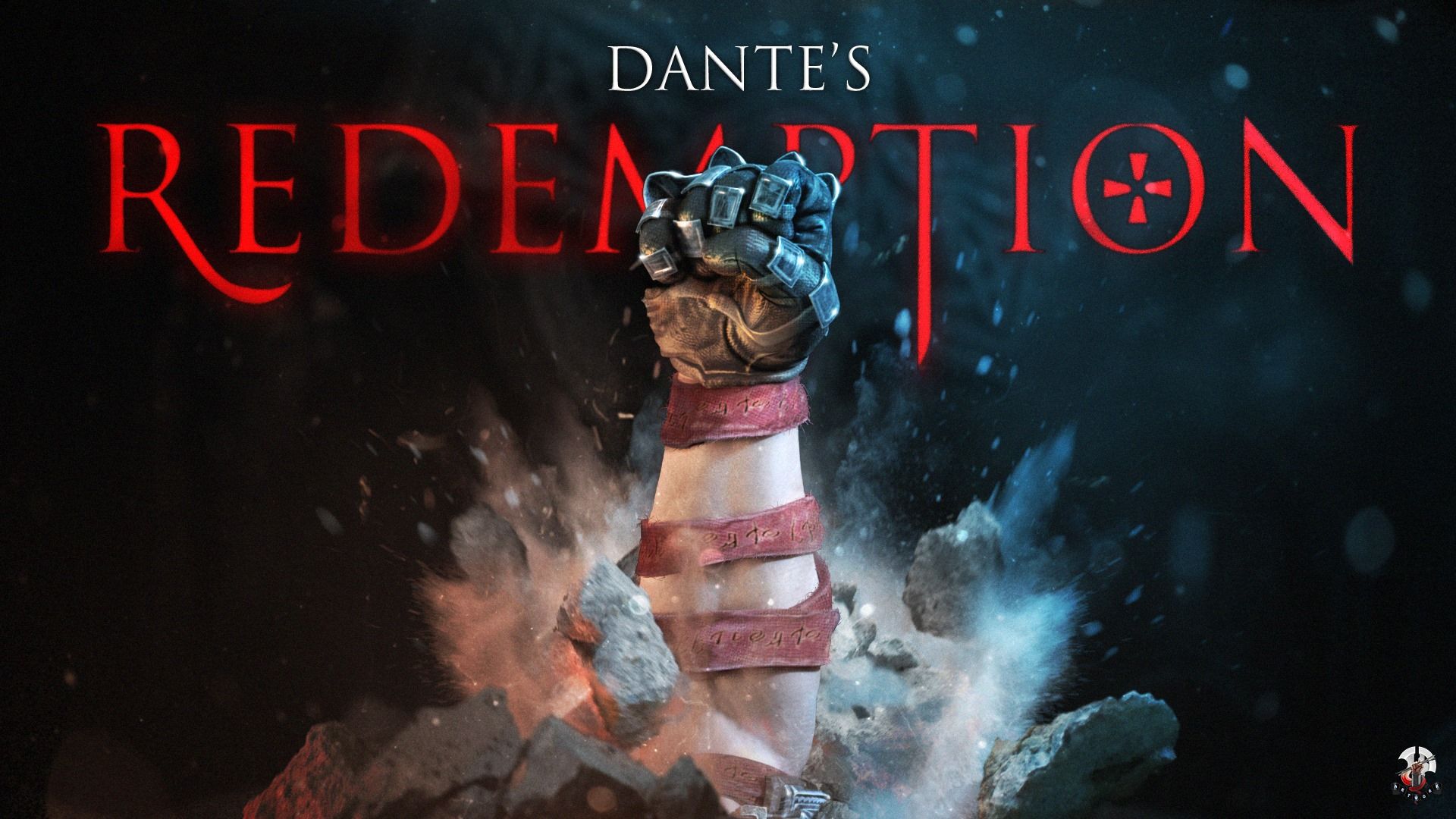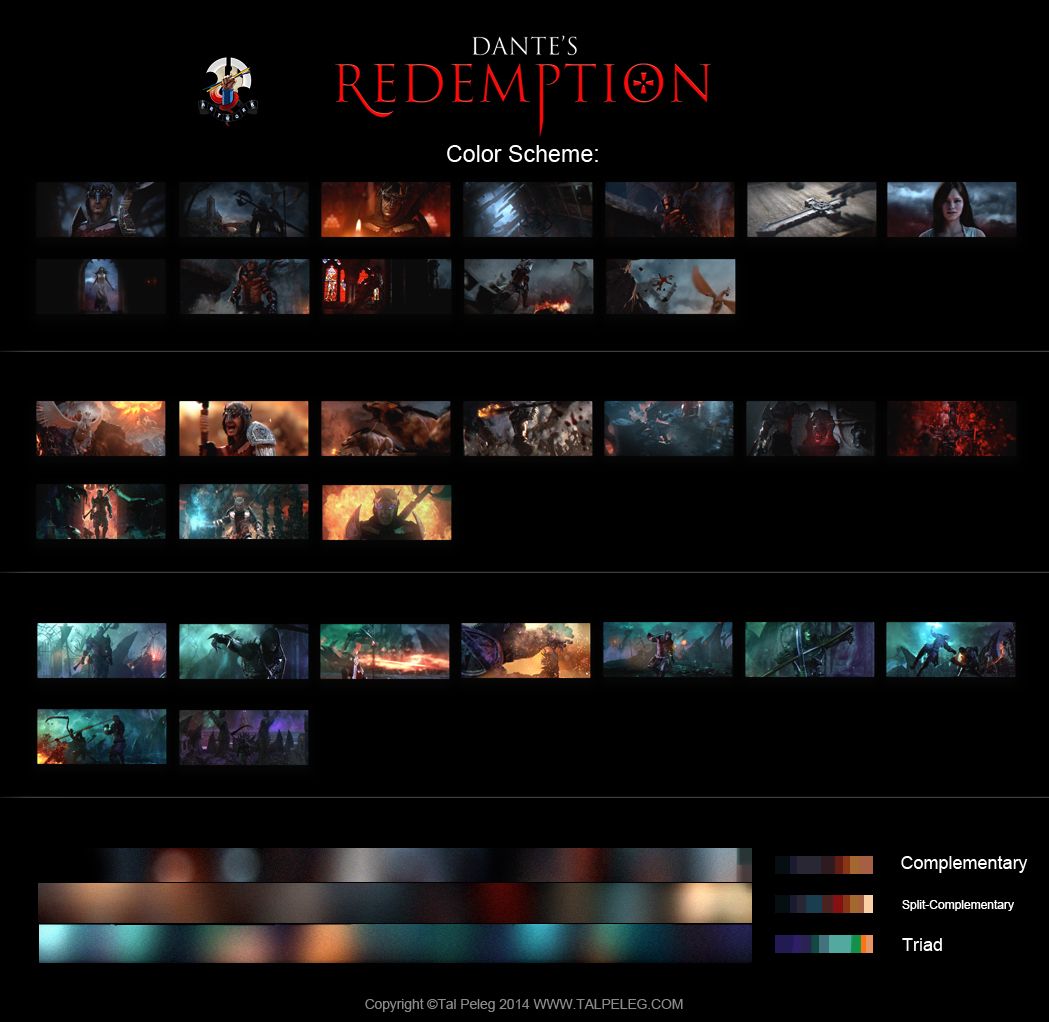A few days ago we reported how Naughty Dog's Senior Cinematics Animator released Dante's Redemption, a CGI fan short "ressurrecting" the Dante's Inferno franchise.
Recently he launched a new version in shiny 1080p, which you can see at the bottom of the post, and wrote an extensive blog post explaining how the short was created. If you want to more about CGI, this is your lucky day.
First of all, Peleg explains what inspired him in Dante's Inferno.
Dante's Inferno is a dark medieval setting based on The Divine Comedy poem. The protagonist is the actual poet, themed up as a repenting holy warrior crusader that damns and absolves souls in the inferno. The game had killer gameplay, awesome combat animations, great soundtrack, audio & VFX. Dante's fortitude wasn't the only dimension; he was a deep character, a tormented soul that matured throughout his journey in the inferno. Graham McTavish's superb voice acting was one of the dominant reasons the character resonated with me, as well. Another fascinating aspect of the game, to me, was that Visceral Games revisited the poem with a very strong theological theme. It's an interesting choice considering many mythological films / games with the concepts of hell and heaven, or angels and demons, stemmed from or are intertwined with theology. Dante's Inferno went head on towards the source, into a glaring Christian backdrop, which made it unique. I also got to be part of Visceral Games for a short time during 2010, and was privileged to come by some incredibly inspiring artwork from the Inferno team.
We also get to catch a glimpse on the detailed workflow from concept to the final video.
- Concept Art: The art direction established for the look and feel of characters / environment. For the project, this was attained using mostly references (as mentioned above) and pre-existing art from the original game.
- Modeling & Rigging: Artists digitally sculpt the characters / environment based on the art direction. Riggers install joints and blendshapes onto the character models, preparing them for animation.
- Edit: The cut in which the short is built up from.
- Scene layout: Positioning of the set and the characters in the scene + draft camera, based on the edit.
- Animation: Creating the motion performance for the characters / objects (and camera) in the scene.
- Lighting (& VFX): Rendering the atmosphere and the mood to achieve the established color palette of the concept art.
- Compositing (& VFX): Gathering the rendered (layered) scene for color correction, depth of field and additional effects.
When done in a professional team, the steps are normally split between different teams, but Peleg handled almost everything by himself.
One of the most interesting parts of Peleg's post details how he selected the color palette to better underline every moment of the story:
In order to enhance the three beats of the story arc, I started off with a complementary color palette of blue and red. The story starts off outdoors during a gathering storm. Next, is the contrasted warm indoors with near dominating red-orange hue. 4th shot restores the cold palette back with a chapel's roof collapsing. From this point on the color mixing of the cold dark blue and warm fire is more apparent.
The second sequence continues a similar pattern, however towards the end I introduced the slow-mo graveyard shot with the crows (that becomes a close up) that infuses a triad color palette of green, purple and orange.
This provided a less sudden transition towards the final section, the confrontation with the Judge Of The Dead where the aforementioned triad palette completes the trailer.
I chose the green-purple-orange color scheme because of its eerie / fantastic mood, which fit for the final fight. It served as a glimpse towards the first circle of hell - Lust. I used Mental Ray for all the renders.
The animation of the short was done almost all by hand. There's no motion capture and very little physics simulation, which is an extremely effective showcase of Peleg's artistry.
Animation across the board is hand keyframe done in Maya. This includes Dante's chainmail, armor, back torn loin, Grim's hoodie, chains, armor plates and each and every pegasus feather. EA's Dante had two red strips and cross ribbons dangling down from his wrists. Since I had no dedicated simulation artist on board, I had to cut these out for the short. The only simulated objects are flags, the Pegasus' mane / tail and Beatrice's hair and dress (part of the dress / hair is composited).
One of the most interesting things of Peleg's labor of love was that he wanted to put the accent on Dante's emotional and physical performance:
I really wanted to make sure the short showcases an impactful performance so that it serves two purposes:
- Shake the dust off the franchise and create enough attention
- Bring Dante's emotional and physical traits in full force into the pre-rendered cinematics.
While the game did have emotional sections in its pre-rendered cinematics, the action wasn't given much focus, likely due to the weight of the game's combat mechanics and in-game-cinematics. This time around I wanted to push Dante's emotional and physical performances to the max, in the glory of CG spotlight.
Matte painting for backgrounds is another element which is often overlooked in both CGI and game development, and Peleg create most of his vistas from 2D shots he took himself, modifying them heavily to give them their final eerie look:
The vast majority of the background matte paintings are digital bastardization of pre-existing live 2D shots. Considering the workload and the necessity of fast turn overs, it worked out great. In one of the shots I had filmed a background plate myself, on Mt. Rubidoux, Riverside, CA. I hiked up a couple of miles on the trail leading to Mt. Rubidoux during an overcast day and got some pretty good shots. Once I cleaned it up from certain environmental obstructions (people, paved road, trash cans, etc'), I proceeded to color corrections and final polish.
Unfortunately, it didn't hold up. I had to change it up quite significantly in order to get better framing, scale and serve a good base for the following shots (a couple of shots further down the edit shows the wooden roof of a chapel collapsing; Mt. Rubidoux has a single short stone tower in an obsolete scale). Left to right, is the original plate I shot to what became the final matte painting:
There's a lot more to learn from Peleg's post, and it's definitely a worthy read if you want to catch a glimpse on some of the massive work done on the short, which in many cases applies to game development as well. If you want to know and see more, you can check out the full blog post here.
//player.vimeo.com/video/103361252?color=d9251e



